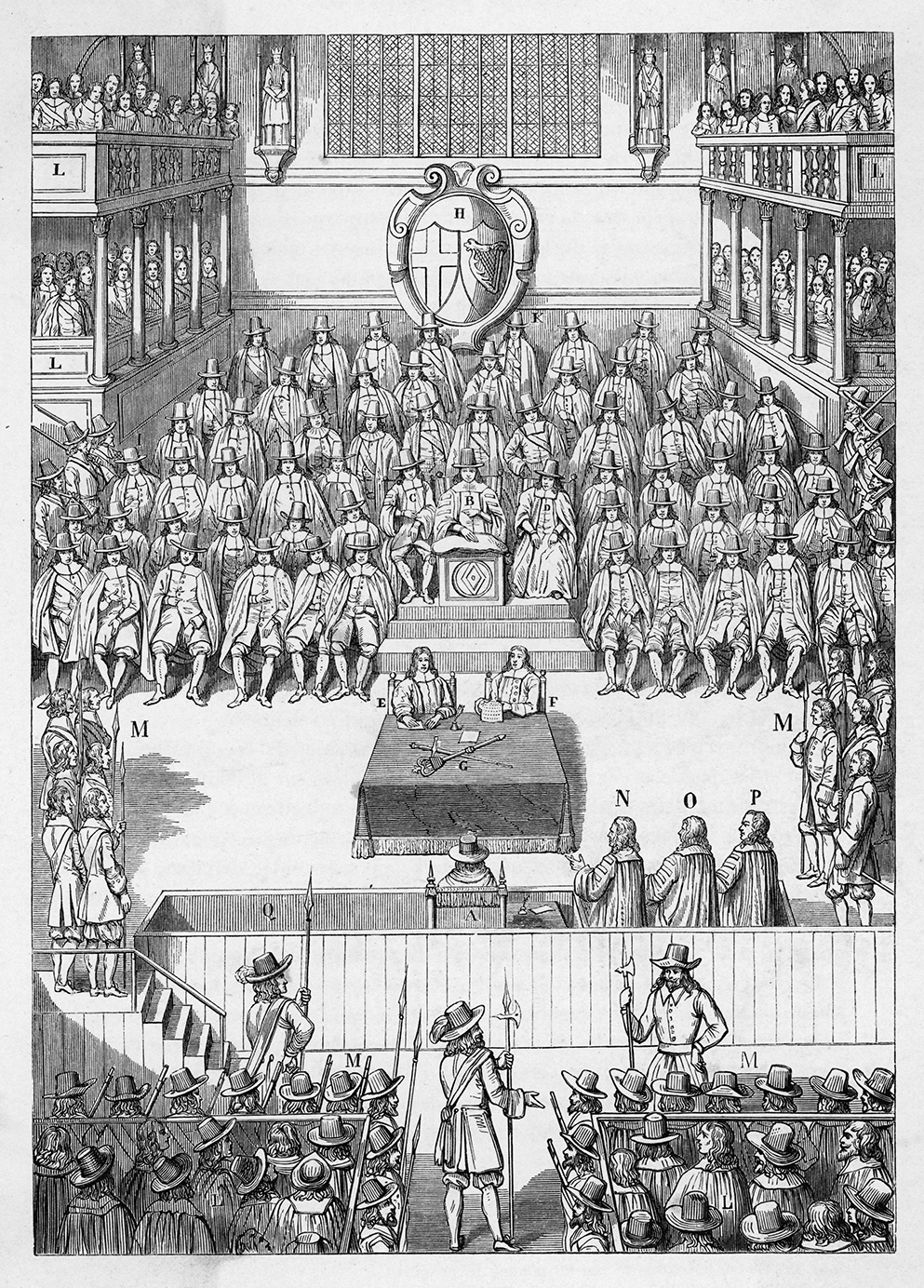Regicide, 1649
8.4 The trial of the king
On 19 January 1649 King Charles was brought from Windsor to St James’s Palace and the following day lodged at the house of Sir Robert Cotton at Westminster where he could be more easily guarded. Shortly after 2.00 p.m. on the 20th the president of the High Court of Justice, John Bradshaw, took his seat in Westminster Hall and the court commenced its work. When the king was brought in the charge against him was read out by the prosecutor, John Cook. From the beginning things did not go well for Bradshaw and the court. Instead of entering a plea, Charles asked by what lawful authority he was tried. If the court could answer that question to his satisfaction he would then enter a plea. Bradshaw seemed surprised by this question and replied that the court sat in the name of ‘the people of England’. The reply did not impress the king and Bradshaw adjourned the court until Monday.
On Monday the 22nd the confrontation between Charles and Bradshaw continued, with Charles insisting that the court had no legitimate authority to try him, whilst Bradshaw contended that it had. The second day of the trial ended in a stalemate, as did the third. On Wednesday the 24th, the court heard witnesses against the king in private and the following day resolved that there was enough evidence to sentence the king to death; the wording of the sentence was finally agreed on the 26th.
The court reassembled on Saturday the 27th, but when Bradshaw tried to open the proceedings he was heckled by a masked lady in one of the public galleries; it was thought at the time that this lady might be Lady Fairfax. Proceedings were further interrupted by one of the judges, John Downes, who declared himself dissatisfied with the proceedings. The court adjourned to hear Downes’s objections, which were quickly brushed aside. On reassembling, Bradshaw proceeded to his summing-up of the case and, finally, condemned Charles to death as a traitor and tyrant. Charles tried to speak, but was silenced and then led away to Whitehall.
Group activity: The trial in Westminster Hall and the charge against the king

Trial of Charles I, 4th January 1649 (engraving)
Chronicle / Alamy
Look at this contemporary illustration of the king’s trial in Westminster Hall. Then read the following extract from The Charge against the King.
Now discuss both the illustration and the charge with your fellow students in the Charles: king and martyr? forum, considering, in particular, the following questions.
- Why do you think the Army and the Rump chose to try the king in such a public place as Westminster Hall?
- What is the significance of the king being called ‘Charles Stuart’?
- What is the essence of the charge against the king?
Optional activity: Further study
Read the short article by Ann Hughes, ‘The execution of Charles I’ . Do you agree with Professor Hughes’s conclusions? Note your answers down.
You can also:
- Read biographies of Bradshaw, Cook and Downes in the Oxford Dictionary of National Biography.
- Listen to the podcast about the objectives of the trial.